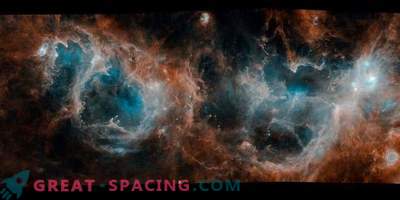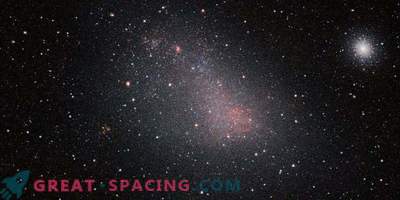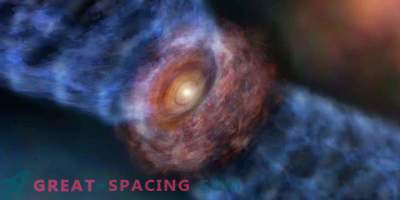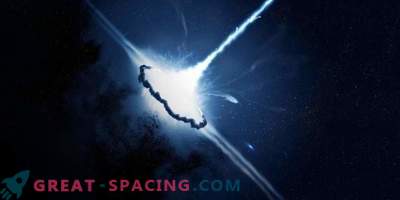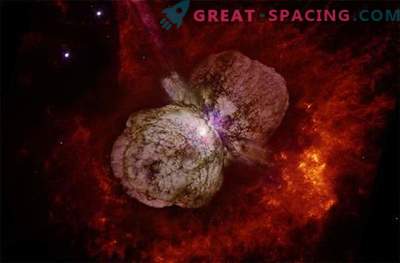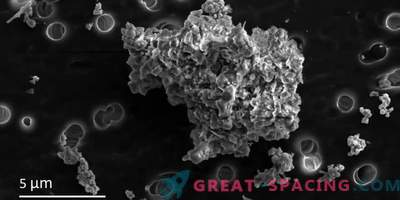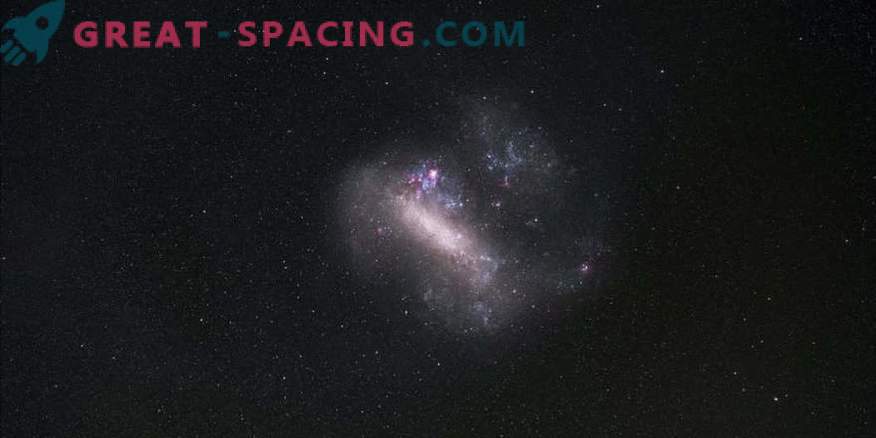
In a recent study, scientists discovered a group of metal-poor stars, shrouded in a huge amount of iron dust located in the Large Magellanic Cloud (BMO). The researchers used a combination of theoretical models of dust formation in circumstellar shells with IR observation from the Spitzer space telescope. The analysis includes projections for the future telescope of James Webb.
Stars with a mass of 1–8 solar develop along the asymptotic branch of giants (AGB), completing their existence as a white dwarf. It is during this fast phase that the stars expand to gigantic sizes and cool, losing most of the mass due to the powerful stellar winds. The low temperature and high density of winds guarantee ideal conditions for the condensation of dust particles in circumstellar shells.

Infrared image of the Large Magellanic Cloud (LMC) from the Spitzer Space Telescope. Above: Comparison of the Spitzer / IRS spectrum of the star SSID 4486 and the best theoretical spectrum of a star with five solar masses surrounded by 70% of iron dust. Below: an artistic vision of a giant star AGB ejecting matter into the interstellar medium
Created in the AGB phase, dust is displaced into the interstellar medium and plays an important role for the life of the galaxy, because it is she who creates new stars and planets. Therefore, it is important for astronomers to understand whether it consists of organic components in a solid state or inorganic. The new study focused on the strange group of massive AGB stars in the LMC. The analysis showed that the objects reach 5 solar masses, appeared 100 million years ago and are poor in metals (iron, magnesium and silicon). But it struck another discovery. It turned out that the IR spectral energy distribution can be produced if the iron dust is the main component of circumstellar shells.
This is unusual for massive AGB stars. Previously, it was believed that such stars mainly create silicates, magnesium and a huge amount of oxygen and silicon. But the find seems even more surprising because of the poor metal environment. Low metallicity creates special conditions, allowing the formation of a significant amount of iron dust. More specifically, in an environment with low metal levels, complex nucleosynthesis inside massive AGB stars is so developed that it burns almost all magnesium and oxygen (necessary for the formation of silicates).
Thus, iron dust becomes the main component of the dust created by the stars. More information will come to know from the future of the James Webb space telescope, which will increase the number of allowed AGB extragalactic stars.
